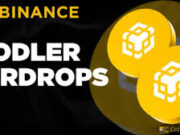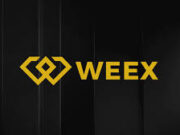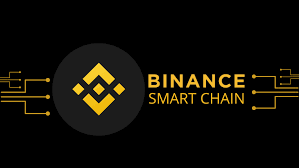The BNB Chain, formerly known as Binance Smart Chain (BSC), has solidified its position as a leading Layer-1 (L1) blockchain in the cryptocurrency ecosystem since its launch in September 2020. Backed by Binance, the world’s largest cryptocurrency exchange, BNB Chain combines high throughput, low transaction fees, and Ethereum Virtual Machine (EVM) compatibility to create a versatile platform for decentralized applications (dApps), decentralized finance (DeFi), non-fungible tokens (NFTs), and cross-chain interoperability. With its native token, BNB, driving its economy, BNB Chain has become a cornerstone of the Web3 landscape. This blog post explores the technical architecture, ecosystem, strengths, challenges, and future potential of BNB Chain, shedding light on why it remains a dominant force in blockchain technology.
What Is BNB Chain?
BNB Chain is a high-performance blockchain designed to address the scalability limitations of earlier platforms like Ethereum. It operates as a parallel chain to the original Binance Chain, focusing on smart contract functionality and EVM compatibility to support a wide range of dApps. Launched by Binance to facilitate fast, low-cost transactions, BNB Chain has evolved into a robust ecosystem for DeFi, NFTs, gaming, and cross-chain bridging. The native token, BNB, serves multiple purposes, including paying transaction fees, staking for network security, and participating in governance.
BNB Chain’s mission is to accelerate the adoption of blockchain technology by providing a user-friendly, scalable platform that bridges centralized and decentralized finance. With over 2,500 dApps, a total value locked (TVL) exceeding $5 billion, and millions of daily active users as of January 2025, BNB Chain is a powerhouse in the crypto space, rivaling platforms like Ethereum and Solana.
Technical Architecture
Consensus Mechanism: Proof of Staked Authority (PoSA)
BNB Chain employs a Proof of Staked Authority (PoSA) consensus mechanism, a hybrid of Proof of Stake (PoS) and Delegated Proof of Stake (DPoS). In PoSA, a limited set of 21 validators, selected based on their staked BNB, confirm transactions and secure the network. This approach prioritizes speed and efficiency, achieving block times of approximately 3 seconds and a transaction throughput of up to 100 transactions per second (TPS). While PoSA enhances performance, its reliance on a small validator pool makes it more centralized than competitors like Ethereum or Solana, raising concerns about single points of failure and control by Binance.
EVM Compatibility
BNB Chain’s compatibility with the Ethereum Virtual Machine (EVM) is one of its standout features. Developers can seamlessly port Ethereum-based dApps to BNB Chain using familiar tools like Solidity, Remix, and MetaMask, reducing barriers to entry. This compatibility has fueled the growth of BNB Chain’s ecosystem, attracting projects like PancakeSwap, Venus, and Alpaca Finance. EVM compatibility also enables interoperability with Ethereum, allowing assets to move between the two chains via bridges like the Binance Bridge.
Scalability and Fees
BNB Chain is designed for scalability, offering significantly lower transaction fees than Ethereum, averaging around $0.15 per transaction. While higher than Solana’s sub-cent fees, these costs remain competitive, making BNB Chain attractive for DeFi and NFT applications. However, recent data indicates a 95% increase in transaction fees over three months, suggesting potential challenges during network congestion. BNB Chain’s architecture supports high-frequency trading and microtransactions, but its 100 TPS capacity lags behind Solana’s 65,000 TPS, limiting its scalability for ultra-high-throughput use cases.
The BNB Chain Ecosystem
BNB Chain’s ecosystem is one of its greatest strengths, driven by Binance’s vast user base, infrastructure, and $1 billion growth fund launched to support developers. Key components include:
- DeFi: BNB Chain hosts leading DeFi protocols like PancakeSwap, the second-largest decentralized exchange (DEX) by transaction volume, with over $1 billion in daily trading. Other notable projects include Venus (lending) and Biswap (DEX), contributing to a TVL of over $5 billion. BNB Chain’s low fees and fast confirmations make it a hub for yield farming, liquidity provision, and stablecoin trading.
- NFTs and Gaming: The platform supports vibrant NFT marketplaces like Mobox and NFTb, as well as play-to-earn (P2E) games such as CryptoBlades. BNB Chain’s low-cost transactions are ideal for NFT minting and in-game economies, driving adoption in the metaverse and gaming sectors.
- Cross-Chain Interoperability: BNB Chain facilitates asset transfers with Ethereum, Solana, and other blockchains through bridges like Wormhole and the Binance Bridge. Recent integrations, such as BNSOL (a liquid staking token for Solana), highlight its commitment to cross-chain functionality.
- Web3 and Infrastructure: BNB Chain powers Web3 applications, including decentralized identity and storage solutions, and supports Binance’s Web3 wallet, which integrates tokens like SOL and FDUSD. Its multilingual interfaces and global reach make it accessible to developers and users worldwide.
In February 2024, BNB Chain led blockchain rankings with nearly three times the daily active wallets of Solana, though Solana’s wallet growth (137% over three months) outpaced BNB Chain’s (29.75%). This underscores BNB Chain’s strong user base but highlights increasing competition.
Strengths of BNB Chain
- EVM Compatibility: Seamless integration with Ethereum tools lowers the barrier for developers, enabling rapid dApp deployment.
- Low Fees: Transaction costs averaging $0.15 make BNB Chain cost-effective for DeFi, NFTs, and microtransactions.
- Robust Ecosystem: Backed by Binance’s infrastructure, BNB Chain benefits from a $1 billion growth fund, extensive developer support, and millions of active users.
- Cross-Chain Bridging: Interoperability with Ethereum, Solana, and other chains enhances its utility for multi-chain applications.
- Global Reach: Multilingual interfaces and Binance’s brand recognition drive adoption across diverse markets.
Challenges and Risks
- Centralization Concerns: The PoSA consensus, with only 21 validators, raises questions about decentralization and potential control by Binance. This could expose the network to censorship risks or regulatory scrutiny.
- Rising Fees: A 95% increase in transaction costs over three months suggests scalability limitations during peak usage, potentially deterring cost-sensitive users.
- Regulatory Risks: As a Binance-backed platform, BNB Chain is vulnerable to regulatory actions targeting the exchange, particularly in jurisdictions like the U.S. and Europe, where Binance faces ongoing scrutiny.
- Competition: Platforms like Solana, with higher TPS and lower fees, and Ethereum, with greater decentralization, pose competitive threats. Solana’s recent wallet growth and integrations (e.g., FDUSD) challenge BNB Chain’s dominance.
- Security Incidents: BNB Chain has faced hacks, such as the $570 million exploit in October 2022, highlighting vulnerabilities in cross-chain bridges and smart contracts.
Recent Developments and Sentiment
Posts on X reflect mixed sentiment about BNB Chain. Users praise its integration with Solana (e.g., BNSOL staking and Web3 wallet support) and its role as a DeFi hub, but some criticize its performance, citing clunky interfaces and slower speeds compared to Solana. Speculation about Binance manipulating SOL prices to maintain BNB’s market cap dominance has surfaced, though such claims lack evidence. BNB Chain’s roadmap includes upgrades like opBNB, a Layer-2 solution to enhance scalability, and deeper Web3 and metaverse integrations, signaling its ambition to remain competitive.
In January 2025, BNB Chain’s market cap surpassed $80 billion, with BNB trading near $600, reflecting strong investor confidence. However, its centralized validator model and rising fees have sparked debates about long-term sustainability, particularly as Solana and other L1s gain traction.
Future Potential
BNB Chain’s future hinges on its ability to address centralization concerns, enhance scalability, and navigate regulatory challenges. Key initiatives include:
- opBNB and Layer-2 Solutions: These aim to boost TPS and reduce fees, positioning BNB Chain to compete with high-throughput chains like Solana.
- Web3 and Metaverse Expansion: Investments in decentralized identity, storage, and gaming align BNB Chain with the growing Web3 economy.
- Global Adoption: Binance’s $1 billion growth fund and partnerships with community banks and fintechs (e.g., Amazon Web Services) will drive developer and user adoption.
- Regulatory Compliance: As a regulated entity, BNB Chain is well-positioned to adapt to evolving crypto regulations, potentially gaining an edge over less compliant platforms.
If BNB Chain can balance scalability with decentralization and mitigate regulatory risks, it could solidify its role as a leading L1 blockchain. However, competition from Solana, Ethereum, and emerging chains like Aptos and Sui will require continuous innovation.
Conclusion
BNB Chain has carved out a unique niche in the blockchain ecosystem, leveraging Binance’s infrastructure, EVM compatibility, and low-cost transactions to power DeFi, NFTs, and Web3 applications. Its PoSA consensus delivers speed and efficiency, but centralization concerns and rising fees pose challenges. With a robust ecosystem, cross-chain capabilities, and a $1 billion growth fund, BNB Chain is well-equipped to drive mainstream crypto adoption. However, to maintain its edge, it must address scalability limitations and navigate regulatory hurdles. For developers, investors, and users, BNB Chain offers a compelling platform for building and engaging with the decentralized future, but its success will depend on adapting to an increasingly competitive landscape.
Disclaimer: This blog post is for informational purposes only and does not constitute financial or investment advice. Cryptocurrency investments carry significant risks, and readers should conduct their own research before making decisions.
Sources:
- Binance.com, “What is BNB Chain?”
- Cointelegraph, “Binance Smart Chain Rebrands to BNB Chain”
- DeFiLlama, BNB Chain TVL and dApp data
- @PhoenixNewsIO, January 2025
- @CryptosBatman, January 2025
- @CoinDesk, October 2022 (BNB Chain hack)




























Solana chain is the best
Solana blockchain rules all